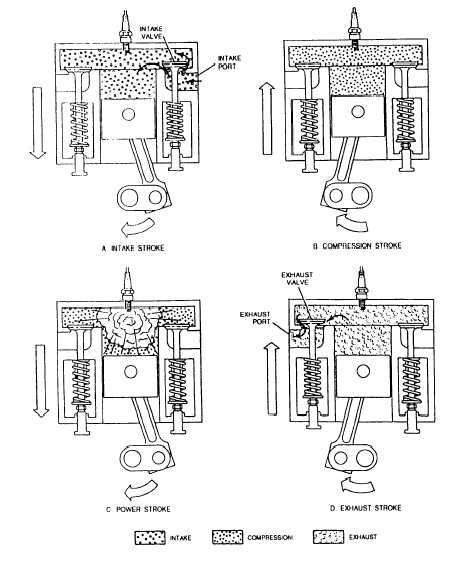has a section offset from the center line of the shaft so
that it “cranks” when the shaft is turned (fig. 1-3).
ENGINE CYCLE
When the piston is at the highest point in the
cylinder, it is in a position called top dead center
(TDC). When the piston is at its lowest point in the
cylinder, it is in a position called bottom dead center
(BDC) (fig. 1-4). As the piston moves from top to bottom
or from bottom to top, the crankshaft rotates exactly one
half of a revolution. Each movement of the piston from
top to bottom or from bottom to top is called a stroke;
therefore, the piston completes two strokes for every full
crankshaft revolution.
For an engine to operate, the following sequence of
events must occur:
1. INTAKE: A combustible mixture is pulled into
the cylinder.
2. COMPRESSION: The combustible mixture is
compressed into a smaller space.
3. POWER: The compressed combustible mixture
is ignited causing it to expand, producing power.
4. EXHAUST: The burnt gases are removed from
the cylinder.
The engine repeats this sequence of events over and
over again to produce sustained power. One complete
series of these events in an engine is called a cycle.
Engines have either a four-stroke cycle or a two-stroke
cycle; most engines operate on the four-stroke cycle.
Four-Stroke Cycle Gasoline Engine
In the four-stroke cycle gasoline engine, there are
four strokes of the piston in each cycle: two up and two
down (fig. 1-5). The four strokes of a cycle are as
Figure 1-5.—Four-stroke cycle operation.
1-3

